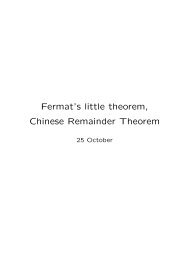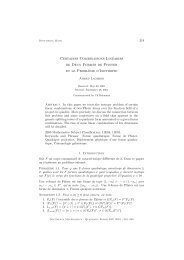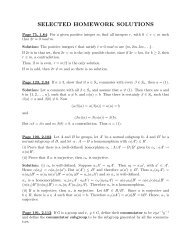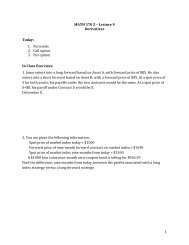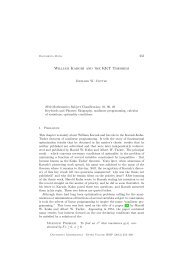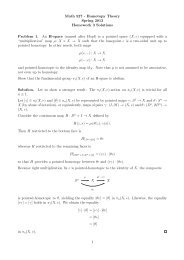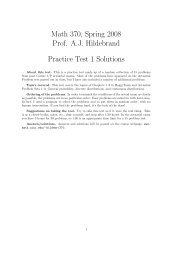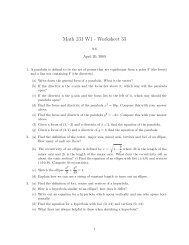User manual for Iode - Department of Mathematics
User manual for Iode - Department of Mathematics
User manual for Iode - Department of Mathematics
Create successful ePaper yourself
Turn your PDF publications into a flip-book with our unique Google optimized e-Paper software.
24 CHAPTER 4. FOURIER SERIES<br />
Remark 4.2. It is interesting to plot the values <strong>of</strong> Cn and determine their<br />
rate <strong>of</strong> decay because Cn equals the amplitude <strong>of</strong> the combined oscillations<br />
at the nth frequency level, in the Fourier series <strong>of</strong> f. To see this, observe<br />
that<br />
An cos nπx<br />
L + Bn sin nπx<br />
L = Cn cos( nπx<br />
L − αn) (4.2)<br />
where the angle αn is defined by requiring cosαn = An/Cn and sinαn =<br />
Bn/Cn. (Formula (4.2) is proved just by substituting the identity cos(β−α) =<br />
cos β cos α + sinβ sin α on the right hand side.)<br />
Options menu<br />
• Change plot resolution: this item is only accessible when you are<br />
in the Plot partial sums and errors mode. You should probably<br />
increase the plot resolution if you are studying rapidly oscillating functions,<br />
or if you choose top harmonic bigger than, say, 100. The prompt,<br />
“Number <strong>of</strong> points to be plotted”, refers to the number <strong>of</strong> plot points<br />
in the interval x1 ≤ x < x2.




